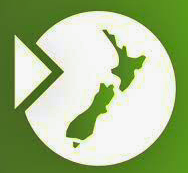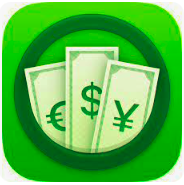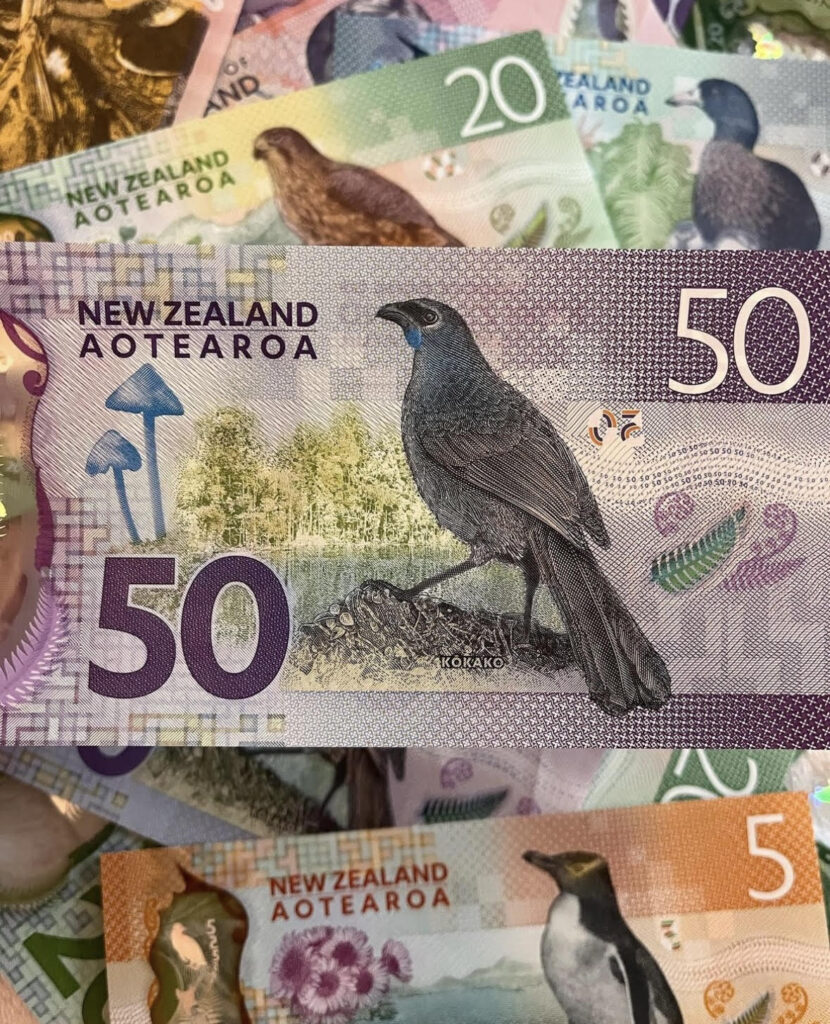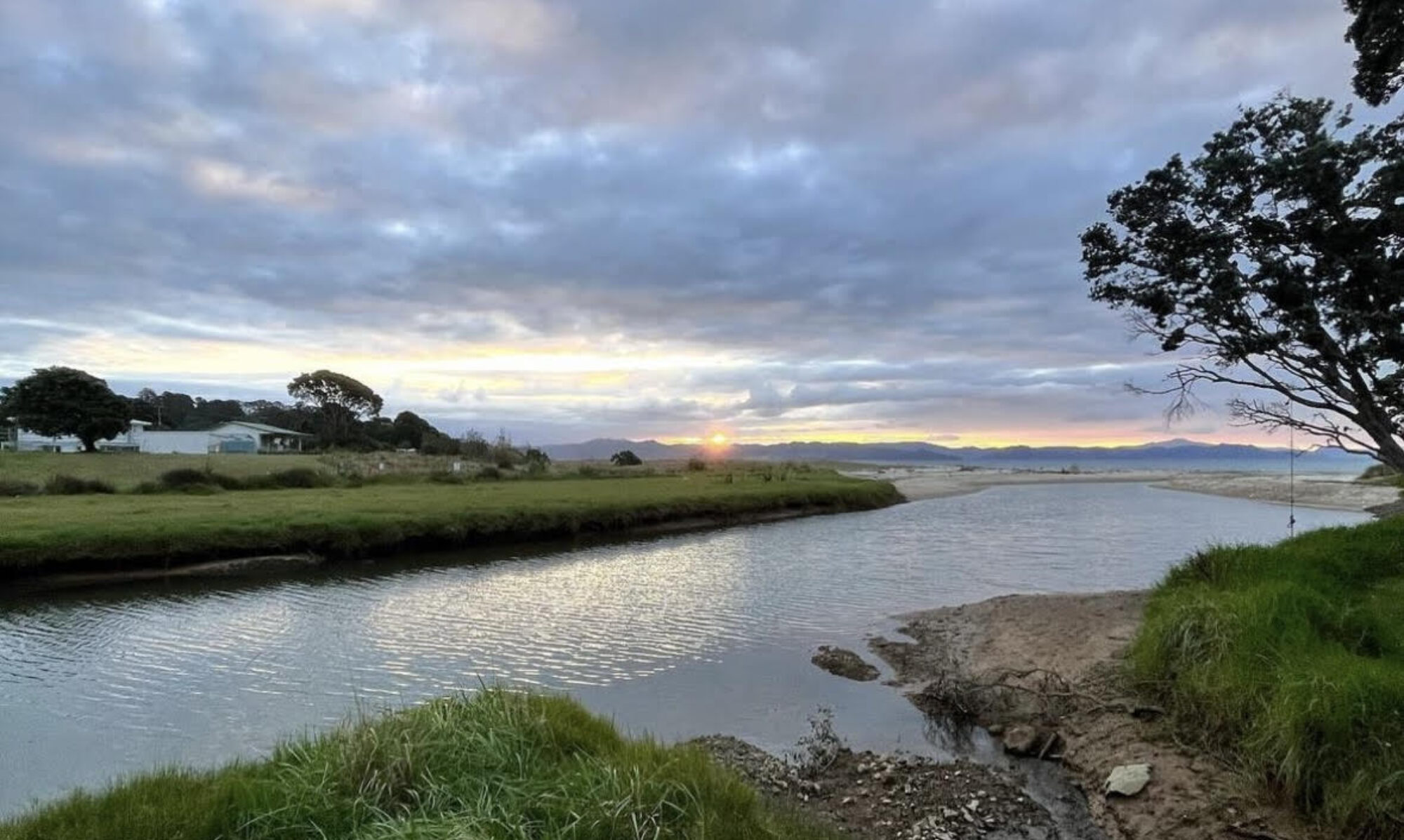The United States is on New Zealand’s “visa waiver country” list, which means that as an American tourist you can stay for up to 90 days without needing to apply for any special visa ahead of time* (<–yes, that’s an asterisk. Don’t worry; it probably won’t pertain to those of you planning a regular old-fashioned New Zealand “bucket list” vacation).
Although you’re exempt from having to apply for a special visitor’s visa, there are a few things you need to do that are mandatory in order to enter New Zealand.
First things first: they will not allow you to enter NZ if your passport is expiring within six months, which is actually true for traveling to a number of different countries. Make sure to check your passport way before you book your tickets.
In order to enter New Zealand, you will need two things (besides your not-expiring-within-six-months passport):

1: An NZeTA, which is short for “New Zealand Electronic Travel Authority” and an IVL (“International Visitor Conservation and Tourism Levy”). When you apply for your NZeTA you are simultaneously applying for your IVL, which makes it easy. (Note: the NZeTA was implemented in 2019, so this will be new to those of you who haven’t traveled to NZ since then).
Here’s how to get it: download the app–literally just called “NZeTA”–and follow the extremely easy directions. You will need to upload a photo of yourself and a photo of your passport, as well as enter some very basic details. The whole thing will take you less than five minutes. The total cost is $52 NZD, or approximately $33 USD (the NZeTA is $17 NZD and the IVL is $35 NZD, but they combine them into one fee). UPDATE: As of October 1, 2024, the total cost of an NZeTA is now $119 NZD, or approx. $72 USD. A good portion of that money goes towards protecting New Zealand’s natural environment, so it’s really a small price to pay to enter this gorgeous country.
It says it can take up to 72 hours for your NZeTA to be approved, though both times I’ve done it, I was approved within a few hours. Once approved, your NZeTA is good for two years. Keep the app on your phone to show Customs upon your arrival.
EDIT (January 9, 2024): When I originally wrote this blog post in late December, I stated that you need to complete a New Zealand Travellers Declaration and that you will be asked to fill out a Passenger Arrival Card just before you land. As of January 2, 2024, you only need to complete the Travellers Declaration; it seems that the NZTD and the Arrival Card are now one and the same. But I am going to leave the information for both of them, as it changes back and forth; when I first came to NZ in March 2020, we only had to complete the arrival card on the plane. Then in July 2022, I had to do something new called the NZTD. Then they got rid of the NZTD and it was back to the arrival card in January 2023, but then they reinstated the NZTD at some point last year. If it lets you do the NZTD, complete that and then just to be on the safe side, ask the airline stewards if you need to also complete the arrival card.

2: A completed New Zealand Travellers Declaration. As with the NZeTA, the NZTD has an app. The NZTD needs to completed no earlier (earlier! Not later!) than 24 hours before your flight to NZ departs. Please read over this page, specifically the part about layovers, to make sure you’re in the correct 24 hour window. You should set a reminder in your phone to make sure you remember to do it, since your mind will likely be on other things. You can, however, start the process whenever you want, since after you input your name and email address they will email you a reference number so that you can go back in and edit/add details later. The NZTD is free and pretty easy to fill out (passport details, recent travel history, contact details, etc).
A few things to note about the New Zealand Travellers Declaration:
A. When it asks you from which airport you are flying, make sure you enter the airport you’ll be flying out of when you head directly to New Zealand. That is, if you have a flight from Los Angeles–>Fiji–>Auckland, you would enter “Fiji” as the departing airpot, not Los Angeles.
B. When entering the date of your arrival, make sure you do it in proper NZ format, which is DD-MM-YYYY (i.e. April 3, 2024 would be entered as 03-04-2024).
*Ha! You forgot about that asterisk, didn’t you?
Americans can automatically stay in New Zealand for 90 days as a tourist, BUT: you cannot exceed 270 days in the country within an 18 month window. Wait, what? Yes, that’s correct: to directly quote the Immigration NZ website, “You can visit New Zealand as a genuine tourist for up to 9 months in an 18-month period. The 18-month period is calculated backwards from the last day you intend to be in New Zealand. If the last day you’ll be here is 1 December, then your 18-month period will begin on 1 June of the year before.” I know; it’s confusing. And it likely won’t apply to the majority of people reading this, but I still wanted to mention it.
FLYING INTO NEW ZEALAND
Shortly before your flight lands in New Zealand, you may be asked to complete a Passenger Arrival Card, so make sure you have a pen on you. It’s a little two-sided card that asks you to fill out some basic info–your name, passport number, the dates of your trip—as well as more in depth information. Be prepared to specify other countries you’ve lived in and/or visited in the past five years, as well as any “wilderness areas” you’ve been to in the last 30 days. They will want to know if you are bringing in soil, wildlife, golfing or beekeeping equipment…the questions may start to sound weird, but New Zealand is *extremely strict* about what you can and absolutely cannot bring into the country. One piece of foreign matter can quickly become a major biosecurity hazard for this little island nation; they’re strict for a good reason. Answer the questions honestly, and if you’re in doubt about whether or not you should declare something, declare it (even something as benign as a lavender satchel may be problematic). I once brought unopened Rx nutrition bars with me, one of the ingredients of which was “eggs,” and I declared on the form that I was “carrying eggs” (in retrospect: really, Hilary? Pretty sure they meant actual eggs). The woman at Customs laughed me through but thanked me for being so thorough. Err on the side of total honesty. There are hefty fines if you’re caught lying.
Take a look at the form here so you know what to expect, and check here to see a list of what you can and can’t bring into the country.
Once you’ve filled out your Passenger Arrival Card on the plane, slip it into your passport. They will take it from you at Customs.
Make sure all of the footwear you are bringing with you is clean. Someone I know had to remove their hiking shoes upon entry and Customs examined them with a magnifying glass and a pair of tweezers and pulled out a single seed. They don’t mess around. Either get new shoes or wash your old ones before you go.
HERE ARE SOME PRACTICAL THINGS YOU CAN DO BEFORE YOUR TRIP

Download the “Currency” app. It’s free, and it gives you the up-to-the-minute exchange rate. At this moment, $1 United States Dollar is worth $1.588 New Zealand Dollars.
Speaking of apps, you should create a “Travel” folder on your phone so that you can keep everything in one place. The Currency app, your NZeTA app, the NZTD app, the apps for each airline you’re flying, the Mobile Passport app (if you use it), etc.

Call me old-fashioned, but I like to travel with cash on hand. Paying in cash makes me more aware of how much I’m spending, and I also try to avoid making small businesses pay credit card transaction fees (they also sometimes charge *you* a fee for using an overseas card). And dear lord New Zealand money is just so beautiful to look at!
I set an exchange rate alert so that I know when I’m getting the most bang for my (U.S.) buck; you can set it to email you if the exchange rate goes over a certain threshold. When it reaches a really good rate, I hop on down to my local AAA office. AAA will exchange any foreign currency for free if you’re a member, and it only takes a few days for the currency to come in. Your bank may be able to convert foreign currency for free as well.
You don’t need to bring cash to AAA—you can exchange currency via debit card–but I prefer to squirrel away any extra cash I have on hand and use that for currency conversion. I know it’s six of one/half dozen of the other whether you buy foreign currency with a debit card or cash, but it feels so much thriftier when you use squirreled away cash.
Everyone knows this, but just as a reminder, whenever you travel out of the country you should tell your credit card companies and your banks so they don’t think your card has been stolen. You can usually do it right through your credit card or banking app. I just did this a few days ago and was surprised to discover that my credit cards no longer care to know the dates and places I’ll be traveling because they “carefully monitor [my] account for suspicious activity!”, which in and of itself sounds suspicious to me, but whatever.
(A PARTIAL LIST OF) WHAT TO BRING WITH YOU TO NEW ZEALAND (WHICH I WILL ELABORATE UPON IN A FUTURE POST)
Photocopies of your passport, driver’s license, and credit/debit cards, as well as a printout of your NZeTA and NZ Travelers Declaration….and for the love of god, don’t keep them *with* your actual passport, driver’s license, and credit/debit cards. Stash them somewhere in a completely different bag. These are to be used in the hopefully unlikely event that your passport or cards are stolen or lost.
A physical (not a note in your phone!!!) list of important phone numbers. My phone was stolen at the San Francisco airport on my way to New Zealand in 2022–which was just the beginning of a harrowing travel story which I’ll recount for you all at some point–and when I finally found a free “courtesy” phone in the airport, I realized I didn’t know my partner’s phone number beyond the +64 country code, which meant that I had to call my sister, who had to hop on Facebook to message Stewart to tell him about my phone being stolen, and then he replied to Gillian and after a prearranged ten minutes, I called her back and she relayed his message to me, and around and around we went. Trust me: carry a list of numbers you might need. Your emergency contact, your BFF, the hotel or Air BnB you’re staying in when you get there…anyone you might need to reach in the (hopefully extremely unlikely because IT REALLY SUCKS) event that you find yourself sans mobile telephone.
A plug adapter. You can get a three-pack for $12.99. I also bring a portable charging bank to make sure my phone stays charged on day hikes. NZ uses 220v while the U.S. uses 110, so double check any electronic devices to be sure that they will accept that voltage. Otherwise, you’ll need to buy a power converter, or step-down transformer, so you don’t ruin whatever 110v thingie you’re bringing.
Sunscreen. There is a hole in the ozone layer directly above NZ (which some say was made worse by the 2019 volcanic eruption) and the sun there is no joke; you can get very sunburned in less than ten minutes. They do sell sunscreen everywhere, but it’s expensive, so I recommend bringing your own. Also, I’ve never laid eyes on a sunscreen in NZ with an SPF higher than 50. I guess the jury’s out on whether or not anything over 50 even does anything extra, but I like to bring 100 SPF with me to protect all of my beautiful tattoos (and avoid getting skin cancer).
Layers. Much like my home region of New England in the States, the weather in New Zealand can change on a dime. So bring layers, and definitely pack a raincoat and waterproof shoes. I bring quick-dry hiking pants in case I’m caught in the rain. New Zealand style is very casual, so you can go absolutely anywhere dressed in REI-ish outdoor gear and fit right in. While we’re talking clothes, NZ has some of the best thrift shops I’ve ever been to. They call them “op shops”–short for “opportunity shops”–and I definitely recommend checking them out!
A small backpack for little excursions/day hikes. I recommend getting a waterproof one that folds down super small, like this one.
Here’s something you don’t need for NZ: any sort of special driver’s license. The first time I went there, I ordered a $25 “international driver’s license” online which I then found out is not required in NZ. You can drive for up to one year there on a U.S. driver’s license. A friend warned me that AAA may try and upsell you on a special license, but again, you don’t need one for New Zealand. I should know, since I got pulled over for speeding last February in Tairua 😬 and the fact that I was driving with a U.S. license didn’t give the policeman pause at all.
